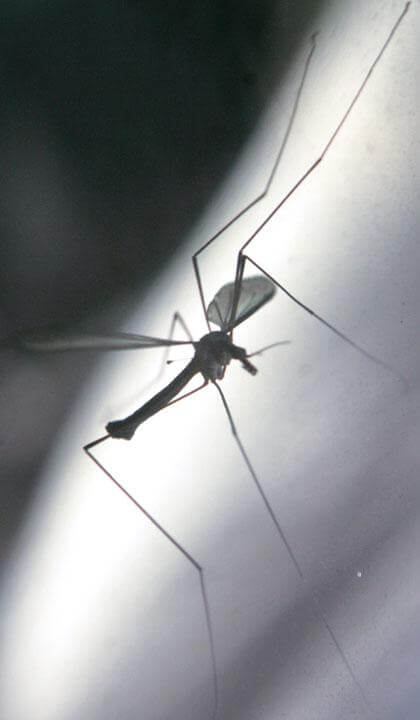By Stephen Stirling
Ten years ago when a woman walked into the Bayside Animal Clinic with a crow perched on her shoulders, Dr. John Charos could not ,help but laugh.
Little did he know that one sick crow was one of the first symptoms of a far more serious problem about to rear its head in Queens: the West Nile Virus.
Charos had no idea that the crow — which he said was “stunned” by a high fever — and several others in the area had been infected by the virus, its first appearance in the Western Hemisphere.
West Nile Virus, a disease that causes flu-like symptoms, is transmitted through mosquito bites and can be contracted by both humans and animals. Though it remains unknown where they originated, the first mosquitoes carrying the virus in the United States were found in north-central Queens.
During the summer and fall of 1999 the virus spread to dozens of people and birds in northern Queens, killing four residents of the borough and nearly wiping out the crow population.
“It started with that one crow and then we started seeing more and more,” Charos said. “We had seen such an increase in the amount being brought in that I contacted Ward Stone, the state pathologist. Then with the word that people were starting to get sick in College Point and Whitestone, we started to put two and two together.”
By September, the city had started extensively spraying Queens with pesticides in an effort to curb the spread of the virus by killing the adult mosquito population.
Flushing resident and longtime community leader Wanda Beck Antosh was one of the first people to notice and report dead crows at Bowne Park in Flushing and said her husband had been ill for two weeks before officials realized they were dealing with West Nile, a virus that had previously only been found in the Eastern Hemisphere.
“There was definitely a fear. No one would venture outdoors after sunset. That was a no-no,” Antosh said. “It was just one of those things that we had to get through. I felt that it was under control once they had identified what was going on. Prior to that no one knew, people thought it could have been terror. Of course, that was before 9/11. God almighty, if it had been after that, there would have been panic.”
After the first cases were initially reported in Queens, West Nile Virus quickly spread across the country, peaking in 2003 when the U.S. Center for Disease Control reported nearly 10,000 cases nationwide.
Dr. James Rahal of New York Hospital Queens, who has been working on treatments for the virus since 2002, said the outbreak never got out of hand in the city because of the exceptional response of the city Health Department of Health.
“I give them all kinds of credit. They’ve done a terrific job,” Rahal said. “That’s why you don’t hear about it as much anymore.”
Rahal has been working with a Connecticut virologist on using Interferon, more commonly used to treat Hepatitis C, to treat those suffering severe effects of West Nile Virus. He said it is important to remember the virus is still active despite fading into the background in recent years.
Mosquitoes carrying the potentially deadly virus have been found in College Point, Auburndale, Pomonok, Kew Gardens and Woodhaven by the Health Department, although no human cases have been reported thus far.
“Residents should remain vigilant in the period between July and September, when the mosquito population peaks,” Rahal said. “I suspect there will be cases this year, perhaps not as many as in years past. But one case is important to the one individual to the person with the disease.”
For more information on the West Nile Virus and precautions residents can take, visit nyc.gov/html/doh/html/wnv/wnvhome.shtml.
Reach reporter Stephen Stirling by e-mail at sstirling@cnglocal.com or by phone at 718-229-0300, Ext. 138.
































